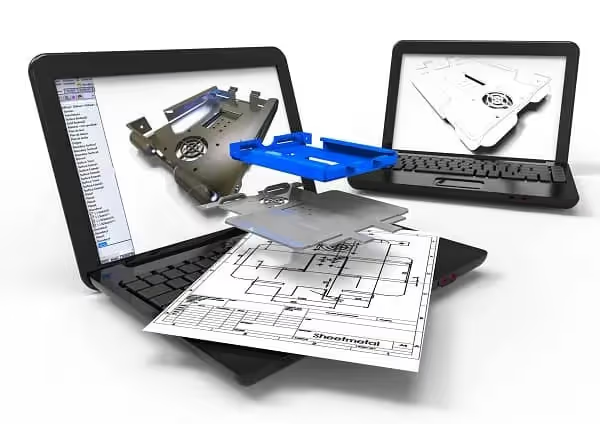Understanding How to Use CATIA Drafting Standards

CATIA has a lot of hidden features, and it’s a great 2D CAD program — that’s probably why so many companies across the globe use it. If you’re tired of playing with your settings to make your drawings look good, you’re in luck.
In this quick guide, we’ll explain how to use CATIA drafting standards to speed up every new drawing.
What Are Drafting Standards?
First, let’s clear things up. When we say “drafting standards”, we’re not talking about anything specific to CATIA or the software. We mean the same drafting standards that are used across different industries. These drafting standards come from ISO, ANSI, and ASME, and they’re typically considered the best practice across the board.
When you see two drawings from different companies that use similar text styles, line thicknesses, and border layouts, it makes sense — they’re both pulling from the same drafting standards. With this clarification, let’s talk about some specifics.
How to Use CATIA Drafting Standards
What are drafting standards used for? Largely, they help create a uniform appearance across every drawing. You might have some specific standards that your company uses, like the border template. If every engineer on your team uses the same standards for each drawing, your drawings will be cohesive across the board.
So, how do you use CATIA to put together these drafting standards? They can be done in two different ways on CATIA. One option is to put together an XML file. This will have a list of standards and default settings.
You can open the XML file on Notebook or any text-based app, but that can mess with the formatting and ruin the file. In fact, it’s very easy to make mistakes on the standards when you use XML files. We suggest using Drafting Standards directly in CATIA V5 or newer.
First, find where your standards file is saved. It will be called “CATCollectionStandard”, and should be on your hard drive somewhere. From there, navigate to CustomStandard and create a new folder called Drafting.
Open CATIA, click Tools, go to Standards, then open the Standard Definition dialog box. Next to Category, click the drop-down and select your new Drafting folder. Next, click the File drop-down and pick the standard you want to start from, like ANSI.xml or ASME.xml.
Click Save As New and save the file within the Drafting folder you just made. Title it whatever you’d like, and make sure it saves as an XML. Now you can change the standards and it will update in every drawing you make.
There are hundreds of different things you can change and customize, and it would take forever to go through everything. Instead, you can use CATIA’s built-in help tool called Help Documentation. Open that and navigate to Interactive Drafting, then Administration Tasks, then Setting Standard Parameters and Styles.
Walking through that training will give specific help for most of the attributes that you can change. Next time you make a drawing, all of these settings will be loaded. You should save and restart CATIA after making these changes.
Conclusion
Changing your CATIA drafting standards can speed up every drawing that you do. Following our guide will get you the best results and ensure every drawing is perfect. If you don’t have time to play with these settings or do your drawings, reach out to our team at CAD/CAM Services.
We are a full-service engineering team that handles outsourced projects. We will do all of your CATIA 2D or 3D modeling for you, saving you time and money. Get a free quote today.
Recent Posts


Tips for Picking the Perfect 3D CAD Viewer for Your Needs
This guide will teach you about 3D CAD viewers and outline considerations to make before picking the right one. We review 5 options and pick a clear winner.

In this guide, you’ll learn how CAD/CAM Services can save you time and money during each digitization project. Digitization can make manufacturing faster than ever before.

How to Build an Aircraft Model by Converting 3D-Scanned STL Files into Functional 3D STEP Files
This in-depth guide will teach engineers how to use 3D-scanned aircraft files and transform them into manufacturable 3D STEP files with fewer mistakes.
